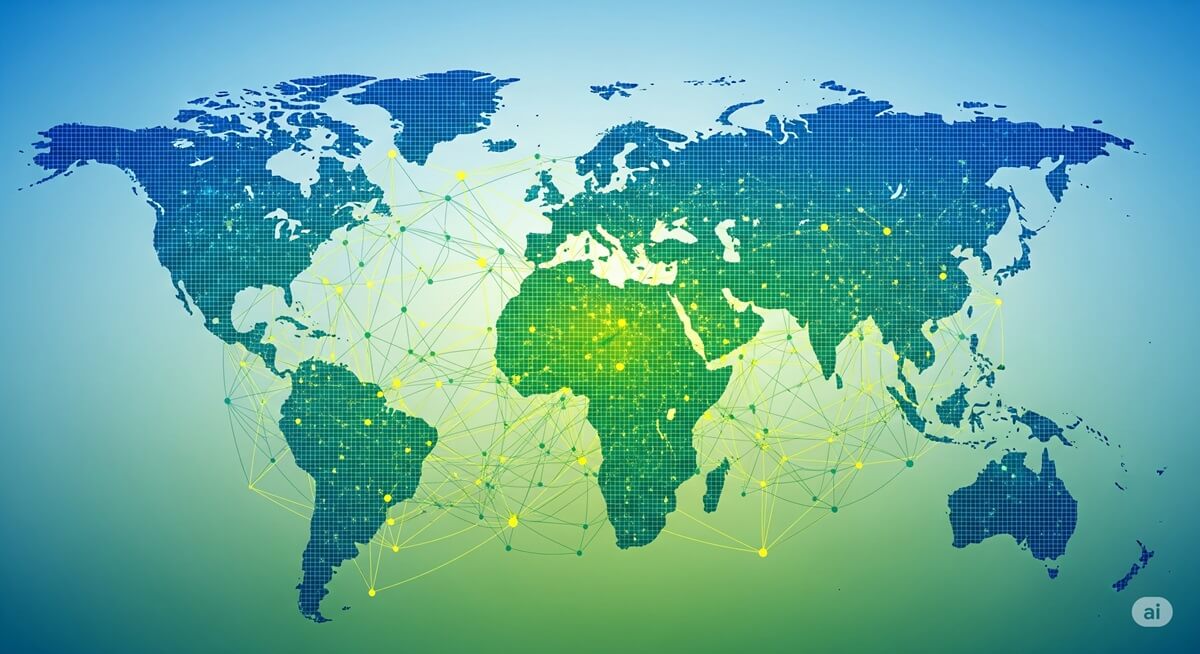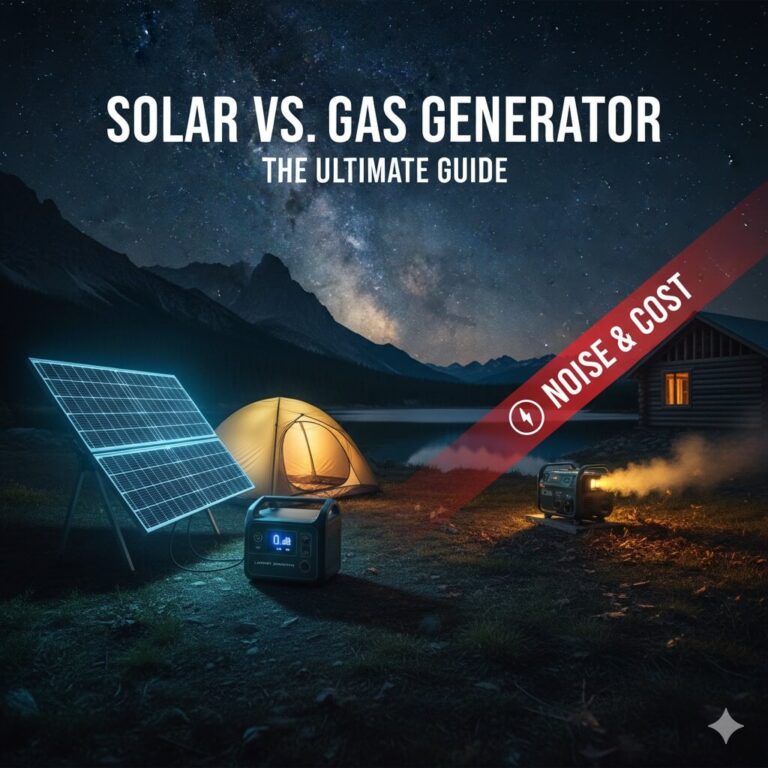Building Bridges, Not Walls: International Cooperation for Global Energy Security Solutions

The global energy landscape is more volatile and interconnected than ever before. From geopolitical tensions disrupting supply lines to the escalating impacts of climate change threatening infrastructure, the very foundations of energy security are being tested. Once primarily defined by uninterrupted fossil fuel supply, energy security has evolved to encompass a complex web of factors: reliability, accessibility, affordability, and, crucially, sustainability. In this intricate global dance, purely nationalistic, protectionist approaches are increasingly insufficient. The challenges we face are shared, and the most effective solutions must be shared too.
This article will argue that international cooperation for global energy security solutions is not merely beneficial but an absolute necessity. It’s the only viable path to building robust, resilient, and sustainable energy systems for all. We’ll explore why collaboration is non-negotiable, the various forms it takes, compelling examples of success, the vital link between climate action and security, the hurdles that must be overcome, and the collaborative course charting the future of global energy.
- 1. The Evolving Landscape of Global Energy Insecurity
- 2. Why Cooperation Is Non-Negotiable: The Interconnectedness of Energy
- 3. Forging Alliances: Mechanisms and Forms of International Energy Cooperation
- 4. Case Studies in Collaboration: Success Stories in Energy Security
- 5. The Dual Imperative: Climate Action as a Pillar of Energy Security
- 6. Bridging the Divides: Challenges to Effective Energy Cooperation
- 7. Charting a Collaborative Course: The Future of Global Energy Security
- Conclusion: The Indispensable Bridge to a Secure and Sustainable Energy Future
- Frequently Asked Questions (FAQs) About International Cooperation for Global Energy Security
- Q1: What does “global energy security” mean in today’s context?
- Q2: Why can’t countries achieve energy security purely on their own?
- Q3: What are some key examples of successful international energy cooperation?
- Q4: How does the transition to renewable energy improve global energy security?
- Q5: What are the biggest challenges to effective international energy cooperation?
1. The Evolving Landscape of Global Energy Insecurity
The notion of energy security has never been static, but recent years have brought unprecedented pressures:
- Increasing Global Demand: Rapid economic growth, particularly in emerging economies, continues to drive up energy consumption, putting immense pressure on existing supply chains and infrastructure.
- Geopolitical Volatility: Energy remains a potent geopolitical tool. Recent conflicts, such as the war in Ukraine, have demonstrated how disruptions in one region can send shockwaves across global energy markets, weaponizing gas supplies and driving up prices worldwide.
- Supply Chain Vulnerabilities: The burgeoning clean energy transition introduces new dependencies. Securing ethical and stable supplies of critical minerals (e.g., lithium, cobalt, rare earth elements) for batteries and renewables, often concentrated in a few geographic areas, poses a novel security challenge.
- Climate Change Impacts: The very climate crisis we seek to mitigate now actively threatens energy security. Extreme weather events—from heatwaves straining grids to floods disrupting power plants—are becoming more frequent and severe, highlighting the need for climate-resilient infrastructure.
- Cyber Threats: The increasing digitalization of energy grids and critical infrastructure opens new avenues for sophisticated cyberattacks that could disrupt supply, underscoring the need for enhanced cybersecurity measures.
2. Why Cooperation Is Non-Negotiable: The Interconnectedness of Energy
No country is an “energy island.” The fundamental interconnectedness of energy markets, infrastructure, and environmental impacts makes international cooperation for global energy security indispensable:
- Transnational Energy Flows: Energy resources, be they oil, gas, or electricity, frequently cross multiple national borders. Disruptions in one region inevitably cascade, affecting global prices and availability.
- Shared Climate Imperative: Climate change, a universal threat, demands a global, coordinated energy transition. No single nation can solve it alone; collective action is paramount for achieving carbon neutrality.
- Economies of Scale: Building large-scale, resilient, and sustainable energy infrastructure—such as transcontinental electricity grids, hydrogen pipelines, or massive renewable energy projects—often requires multinational investment, shared risks, and coordinated planning to achieve optimal efficiency.
- Resource Pooling & Knowledge Sharing: Nations can pool their research and development resources, share technological breakthroughs, and disseminate best practices in energy efficiency, grid management, and renewable energy deployment, accelerating progress for all.
- Diversification & Risk Mitigation: Through cooperation, countries can diversify their energy sources, establish alternative supply routes, and coordinate emergency responses, such as the strategic petroleum reserve releases coordinated by the IEA during supply crises.
3. Forging Alliances: Mechanisms and Forms of International Energy Cooperation
International collaboration for energy security takes various shapes, from bilateral agreements to sprawling multilateral frameworks.
- Bilateral Agreements: Direct deals between two countries covering energy supply, joint infrastructure development, or technology transfer. These can secure specific energy flows or foster particular technological advancements.
- Multilateral Organizations:
- International Energy Agency (IEA): A cornerstone of energy security, historically focused on oil supply and emergency response, now increasingly emphasizing the acceleration of clean energy transitions as a core component of security.
- International Renewable Energy Agency (IRENA): Dedicated to promoting renewable energy adoption globally through knowledge sharing, policy advice, and investment facilitation.
- United Nations Framework Convention on Climate Change (UNFCCC) & COP Summits: While broad in scope, these platforms drive global commitments to emission reductions, which are fundamentally tied to energy choices and necessitate international energy policy alignment.
- Regional Blocs (e.g., European Union, ASEAN): These blocs develop integrated energy markets, cross-border infrastructure, and harmonized policies. For instance, the European energy market integration has led to robust cross-border electricity trade, with interconnection capability strengthening overall stability.
- Cross-Border Infrastructure Projects: The development of interconnected electricity grids, pipelines for oil and gas, and shared storage facilities that enhance regional energy resilience and trade.
- Technology Sharing & Capacity Building: Collaborative R&D initiatives, transfer of clean energy technologies, and training programs aimed at empowering developing nations to build their sustainable energy capabilities.
- Supply Chain Cooperation: International efforts to ensure secure, diversified, and sustainable sourcing of critical minerals essential for the clean energy transition.
4. Case Studies in Collaboration: Success Stories in Energy Security
History and current events offer compelling examples of successful energy partnerships that underscore the power of cooperation:
- IEA’s Coordinated Responses: The IEA has repeatedly demonstrated its effectiveness in energy crises, notably coordinating strategic petroleum reserve releases to stabilize markets during disruptions, such as in response to the Russia-Ukraine war. This highlights the tangible benefit of collective action.
- European Energy Market Integration: Decades of concerted effort have created a highly integrated and interconnected European energy market. With extensive cross-border electricity trade, this integration allows for efficient balancing of supply and demand and mutual support during outages, significantly enhancing regional energy security. The Nord Pool is a prime example of a highly functional regional electricity market.
- Renewable Energy Alliances: Numerous bilateral and multilateral agreements have facilitated large-scale renewable energy projects, including vast solar farms or offshore wind parks, demonstrating successful collaboration in deploying clean energy technologies across borders.
- Capacity Building Initiatives: International bodies and developed nations regularly support developing countries in strengthening their energy governance, building expertise in renewable energy, and implementing climate action plans.
5. The Dual Imperative: Climate Action as a Pillar of Energy Security
The narrative has shifted: climate action is no longer solely an environmental objective but a critical strategy for energy security.
- Clean Energy as Geopolitical Strategy: Transitioning to homegrown renewable energy sources reduces a nation’s reliance on volatile international fossil fuel markets and potentially unstable or hostile suppliers. This enhances energy sovereignty and resilience. As UK Energy Secretary Ed Miliband has stated, “In an unstable world, the only way to guarantee our energy security… is to speed up the transition away from fossil fuels to clean, homegrown energy.”
- Resilience to Climate Shocks: Investing in diversified renewable energy portfolios and smarter, decentralized grids makes energy systems inherently more resilient to the increasing frequency and intensity of extreme weather events driven by climate change.
- Diversification of Energy Mix: Expanding solar, wind, hydropower, and other renewables, alongside strategic, managed phasing out of fossil fuels, creates a more robust and varied energy portfolio, less susceptible to single-point failures or price volatility.
- Avoiding “Preemptive Underinvestment”: Experts caution against prematurely curtailing investment in fossil fuels without sufficient clean energy alternatives at scale. A coordinated, international approach is crucial to ensure a smooth transition that doesn’t inadvertently create new energy security risks.
6. Bridging the Divides: Challenges to Effective Energy Cooperation
Despite the clear benefits, international cooperation for global energy security faces significant hurdles:
- Diverging National Interests: Countries often have different economic realities, resource endowments, and political priorities, which can lead to friction and protectionist measures.
- Geopolitical Rivalries & Mistrust: The “weaponization of energy” observed in recent conflicts severely erodes trust, making it challenging to build long-term, collaborative energy security frameworks.
- Regulatory & Technical Fragmentation: Inconsistent energy policies, disparate technical standards, and incompatible grid codes across borders can complicate cross-border investment and infrastructure development.
- Funding Gaps: Mobilizing sufficient, predictable, and equitable international finance for large-scale sustainable energy projects, particularly in developing nations, remains a persistent challenge.
- Supply Chain Nationalism: A global tendency to onshore critical mineral processing and clean technology manufacturing can create new bottlenecks if not managed through cooperative supply chain diversification strategies.
7. Charting a Collaborative Course: The Future of Global Energy Security
The path forward for global energy security is undeniably collaborative. Experts, like IEA Executive Director Fatih Birol, consistently reiterate that “no country, small or big, is an energy island” and that “diversification—whether in oil, gas, or critical minerals—remains the golden rule of energy security.” The future demands:
- A Holistic Approach: Integrating clean energy technologies, advanced digitalization, robust cybersecurity, resilience to extreme weather, and secure supply chains into a single, comprehensive energy security strategy.
- Accelerated Clean Energy Transition: Redoubling efforts on international cooperation to speed up renewable energy deployment, develop advanced energy storage solutions, and modernize grid infrastructure globally.
- Critical Mineral Security: Enhanced international dialogues and partnerships to ensure sustainable, ethical, and diversified sourcing of essential materials for the clean energy transition.
- Digitalization and AI: Leveraging shared data, artificial intelligence, and predictive analytics to optimize energy systems, forecast vulnerabilities, and enhance grid resilience in real time.
- Addressing Energy Poverty: Collaborative initiatives to ensure equitable access to modern, clean energy for all, recognizing that energy poverty itself is a form of insecurity.
Conclusion: The Indispensable Bridge to a Secure and Sustainable Energy Future
The pursuit of global energy security solutions in the 21st century is a complex endeavor, fraught with geopolitical tensions, environmental imperatives, and technological shifts. However, the resounding message from experts and real-world examples is clear: “building bridges, not walls” through robust international cooperation is the singular, indispensable path forward.
By fostering shared effort, coordinating policy, promoting technological collaboration, and committing to collective climate action, nations can enhance resilience, ensure affordability, and accelerate the clean energy transition. A secure and sustainable energy future for one is, by definition, a secure and sustainable energy future for all. It is time for policymakers, industry leaders, and international bodies to redouble their efforts on collaborative energy initiatives, charting a course towards a more resilient, equitable, and decarbonized world.
Frequently Asked Questions (FAQs) About International Cooperation for Global Energy Security
Q1: What does “global energy security” mean in today’s context?
A: Today, global energy security means ensuring the uninterrupted availability of diverse, affordable, reliable, and sustainable energy supplies for all nations. It encompasses traditional concerns like fossil fuel supply but also increasingly focuses on the transition to clean energy, grid resilience, and supply chain security for critical minerals.
Q2: Why can’t countries achieve energy security purely on their own?
A: Energy markets are globally interconnected; disruptions in one region (e.g., geopolitical conflicts) affect others. Shared challenges like climate change require collective action, and large-scale infrastructure or technology development often necessitates pooling international resources and investment.
Q3: What are some key examples of successful international energy cooperation?
A: Key examples include the International Energy Agency’s (IEA) coordinated strategic petroleum reserve releases during crises, the long-term integration of the European energy market (including robust cross-border electricity trade), and various bilateral and multilateral partnerships focused on developing and deploying renewable energy technologies.
Q4: How does the transition to renewable energy improve global energy security?
A: Transitioning to renewable energy sources like solar and wind enhances energy security by reducing reliance on volatile fossil fuel markets and potentially hostile foreign suppliers. It increases energy sovereignty, diversifies the energy mix, and builds resilience against climate-related disruptions.
Q5: What are the biggest challenges to effective international energy cooperation?
A: Major challenges include diverging national interests, geopolitical rivalries and mistrust (e.g., the “weaponization of energy”), fragmentation of energy policies and regulations across borders, and the persistent gap in mobilizing sufficient international finance for sustainable energy projects in developing nations.



